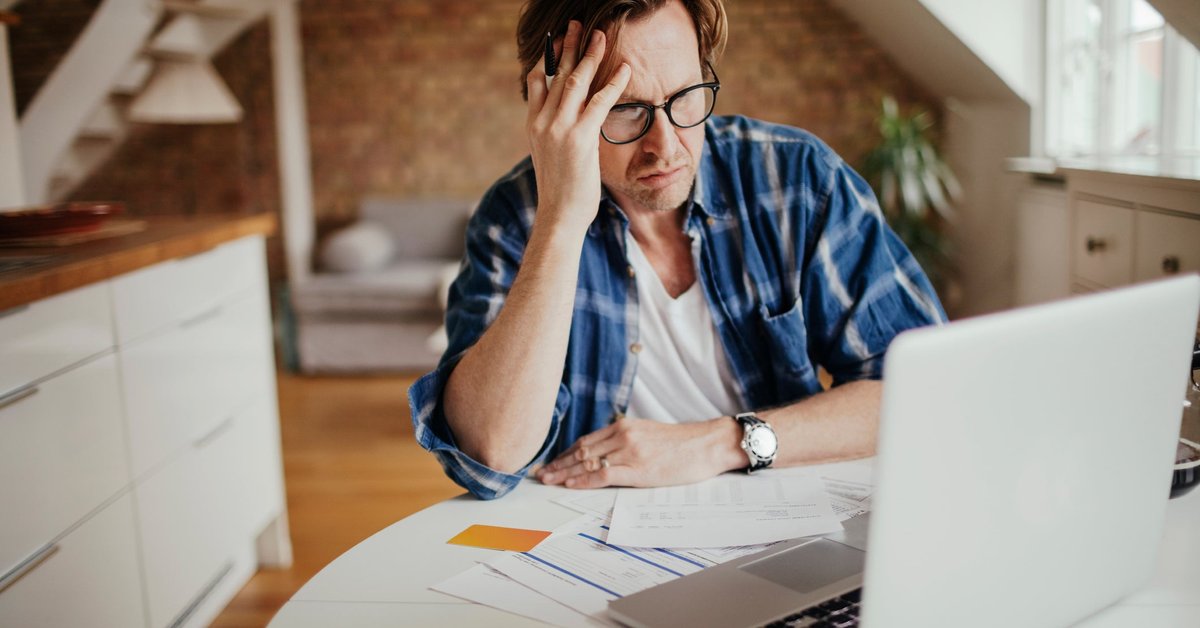Here's What Happens When Hackers Get Access to Your Banking Info
KEY POINTS
- Losing track of your banking info is bad news, as you can lose your money and have your identity stolen.
- You can help prevent it by choosing more secure payment methods, such as online bill pay and credit cards.
- Keep on top of your account balance and activity, and opt in for paperless statements.
Any way you slice it, losing control of your personal information is worrying. And unfortunately, advances in technology have made it easier for thieves and scammers to get hold of your financial data. Let's take a look at the risks you're running if your banking information is leaked or stolen.
What's at risk?
It probably won't come as a surprise to you that if hackers get, say, your checking account information, the money you have in the bank can be stolen. While having just an account number likely isn't enough for thieves to drain that account, the combination of account number and routing number can lead to some less-than-desirable outcomes, such as fraudulent payments, the creation of checks for your account, and possibly online shopping with retailers that only require bank account information. Your bank account could even be used to launder money earned through criminal operations. Your identity itself could also be at risk if you lose track of your banking information.
Identity theft is when someone uses your personal or financial information to perform actions as you, such as opening new credit card accounts, claiming your tax refund, and even pretending to be you if they get arrested. Your bank has a lot of information about you, and if scammers get access to your account data, you could be in for a host of unpleasant developments like these. And these crimes are on the rise; in 2021, the Federal Trade Commission received more than 1.43 million identity theft reports, up 3.3% from 2020.
How can you protect yourself?
Lots of vigilant people have had their banking information or other identity data compromised, through no fault of their own. But it's a good idea to take the following steps to give yourself a fighting chance of protecting your money and data.
Choose more secure payment methods
Checks and debit cards are solid payment methods, but they leave you more vulnerable to scammers than using a credit card. Checks you're mailing to pay bills can be taken from your mailbox and washed, then repurposed. And debit cards offer less robust protections than credit cards. For these reasons, it's a lot safer to opt for online bill payment through your utility company, mortgage lender, and other creditors. And if you're shopping online or in person, credit cards are the more secure bet.
Enable alerts through banking apps
You're using your bank's mobile app, right? Not only does it offer convenience and access to your account information anytime and anywhere, but it likely also offers you the chance to opt in for alerts. If fraudulent activity is detected in your account, you'll be notified and can verify transactions or sound the alarm to the bank if you're not the one spending your money. Just be sure to keep that banking app updated and enable multi-factor authentication for your security.
Don't click links in emails or texts
If you receive something that looks like a legitimate alert from your bank via text or email, don't click on the link that may be included. Reach out to your bank independently and see if there's something you need to worry about. Links in texts or emails may be phishing attempts that can steal your login information.
Go paperless
Bank statements are a treasure trove for scammers, so don't give them the chance to steal statements out of your mailbox. Opt in for paperless statements instead, and you'll get an email from your bank every month telling you that your account statement can be viewed. It's as simple as that.
Check on your accounts regularly
Speaking of simple, one of the easiest ways to stay on top of your bank account and its potential for fraud is to be vigilant about logging in and checking out your recent transactions. See something that looks unfamiliar? Perhaps a charge at a merchant not in your town, and for a purchase you didn't make? Contact your bank ASAP. It's a good idea to stay on top of your cash flow and bank balance situation by checking your account regularly anyway.
Hackers, scammers, and thieves are out there, ready to capitalize when consumers lose track of their banking information. Take the above steps to avoid becoming a victim of money loss and identity theft.
Our Research Expert
We're firm believers in the Golden Rule, which is why editorial opinions are ours alone and have not been previously reviewed, approved, or endorsed by included advertisers. Motley Fool Money does not cover all offers on the market. Motley Fool Money is 100% owned and operated by The Motley Fool. Our knowledgeable team of personal finance editors and analysts are employed by The Motley Fool and held to the same set of publishing standards and editorial integrity while maintaining professional separation from the analysts and editors on other Motley Fool brands. Terms may apply to offers listed on this page. APYs are subject to change at any time without notice.
